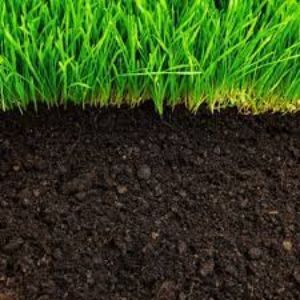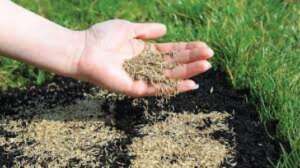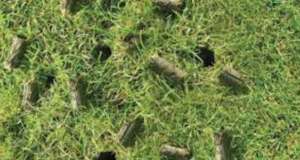Table of Contents

All homeowners dream of a lush, green lawn that is weed-free and pleasant to walk on barefoot. You may show your property’s pride and attract more potential buyers with well-kept, verdant grass. In addition, it’s nice to pull into your driveway and discover a lush, well-kept lawn waiting for you.
In this article, we’ll go over the fundamentals and show you how to achieve fuller, thicker grass with no effort. If you stick to these rules, your lawn will be beautiful but don’t forget that it will require ongoing maintenance.
What Can Be Done to Increase Grass Density?
How to make grass thicker and fuller will involve a combination of the techniques mentioned above. However, we must emphasize that you are not free to pick and choose from the options provided. All these working techniques help thicken grass for the most satisfactory potential outcomes.
Improve Your Soil
Follow the advice of the experts and have your soil tested to ensure that your efforts to grow a lush lawn bear fruit. Thick, robust grass growth is the payoff for the relatively easy soil testing method. You can learn a lot from the soil test findings about where to begin addressing the specific needs of your grass. Get in touch with your county’s extension service if you’re curious about testing for the first time. They provide easy-to-use kits and basic instructions to help you get going.

A soil test’s results will show whether your soil has the ideal pH and other requirements for robust, healthy growth. Soil improvement is a science, and following test recommendations removes the guesswork. If the pH of your soil is too low, for instance, your grass won’t be able to absorb vital nutrients. Get deep roots if you want thick, luscious grass, and you should have it tested to see if your lawn requires lime or other soil amendments to restore the pH balance and nutrient availability.
Overseed
Adding more seeds to sparse regions is called overseeding. Spots and open parts of your grass are typical. Those gaps can be filled by overseeding with a slice seeder or over seeder. If you want your lawn to look uniform, you should be overseeded with the same grass seed.

Aerate
Remember that we discussed how soil compaction could contribute to your lawn’s lack of thickness. Aeration can be used to loosen soil that has been compacted owing to foot activity, soil type, or even a lack of nutrients. If you have a little lawn, you can aerate it with a garden fork instead of an aerator. By poking holes in the lawn, you improve the grass’s ability to absorb water, oxygen, and nutrients. Also, more grass seeds can germinate because the soil is less dense.

Mow Properly
Your grass will grow thick and stay thicker if you follow proper mowing procedures. Instead of cutting the lawn on a weekly schedule, consider what the grass requires. Always remember to mow more often than once a third of the grass’s height has been removed to keep your grass type at its ideal mowing height. You can avoid many of the stressors from patchy, unsightly lawns.
It would be best to keep your mower well-oiled so the blades can make clean cuts without damaging the grass. Lawn illnesses and insect pests can more easily invade and spread across ragged, ripped grass, preventing it from growing into a lush, thick lawn. Changing your mowing pattern regularly also aids in maintaining straight and dense grass. If you want to know about the best lawn mowers for a small yard, here is the guide.
The Ph Level Needs To Be Checked
A lawn’s pH reading will reveal whether it is acidic, neutral, or alkaline. An extremely acidic solution would have a pH value of 1, whereas a fundamental solution would have a pH value of 14. Neutrality is reached at a pH value of 7. Soil with a pH between 6.5 and 7.5 is ideal for lawns (between 6.2 and 7.0 on the pH scale).
Grass will suffer if the soil pH is off because it is too acidic or alkaline, and the grass can’t get the nutrients it needs. Also, the roots of grass plants might be harmed by acidic soil.
Fertilize
Lawn grasses, like all plants, require nourishment, yet the soil often loses its nutrient content when watered or rained upon. Fertilizing your grass consistently during the growing season will assist supply the nutrients it needs to grow thicker and healthier.

New grass seedlings can be established more quickly in an overseeded lawn if you use a beginning fertilizer for an established lawn since it contains the nitrogen that will help the grass grow thick and lush.
Having Enough Water Can Help Prevent Plant Death
How to get thicker grass also involves watering it regularly. Watering a lawn weekly with an inch of water is recommended. Nature may give sufficient precipitation to keep your grass growing at specific periods of the year. However, it’s not uncommon to experience dry periods lasting a couple of months. Soak your grass deeply once or twice a week if that’s the case. We’ve dedicated an entire post to water to provide you with all the information you need to know about how often, for how long, and how much watering will result in a thicker, healthier plant.
Dethatch
Thatch forms a barrier just below the grass leaves and above the ground, preventing the average uptake of fertilizer, water, and air.
Periodic dethatching will clear the soil of dead grass and other debris that has accumulated on top. If you don’t already have a dethatcher or are using garden forks on your lawn, you may want to consider investing in an aerator that includes one.
Remove Weeds
Weeds need to be controlled because they crowd out grass and steal water and nutrients. If your lawn has many weeds, it won’t get as much nourishment or water. Weeding out the competition from weeds helps grass thrive and become thick. Common lawn weeds are easiest to eradicate in the early fall. Pre-emergent herbicides are sprayed on established lawns in the spring before the weeds emerge, allowing for optimal development conditions that promote a thicker, greener lawn.
Conclusion
This article presented a complete guide on how to achieve lush, thick grass and a yard that will be the neighborhood’s pride. If you are planning to make a healthy and thicker lawn, and want to know How to make grass thicker and fuller? then this article will help you.
